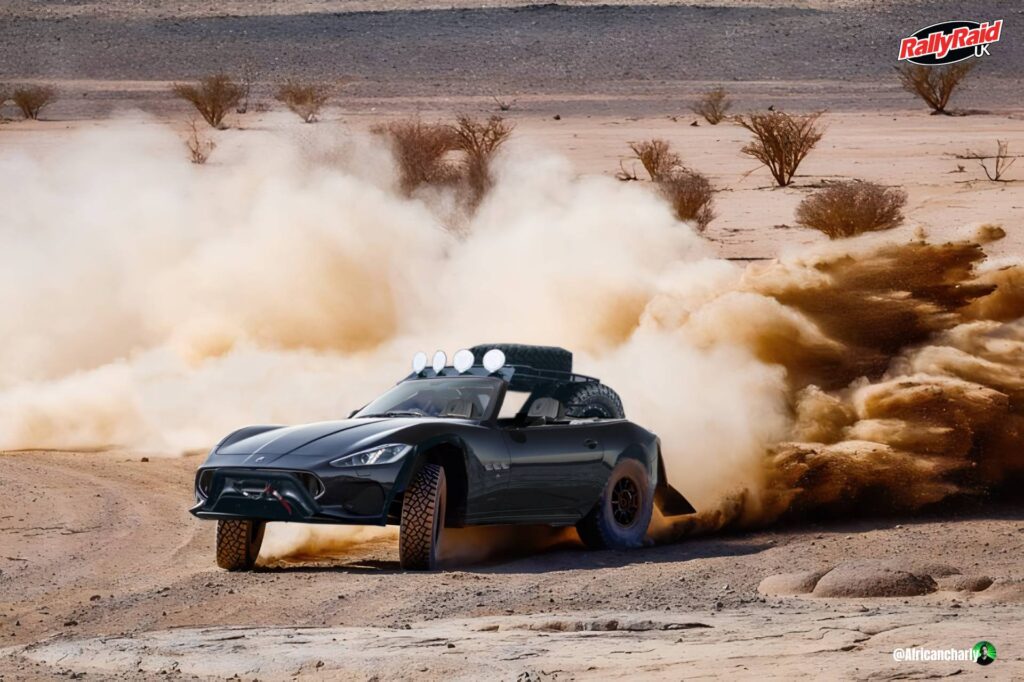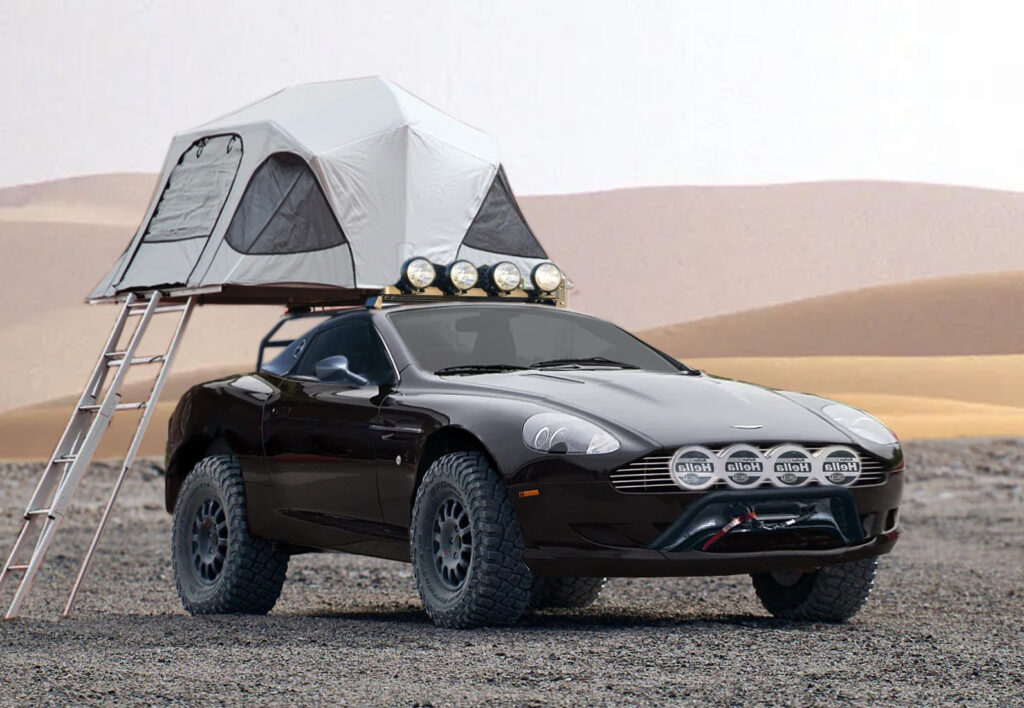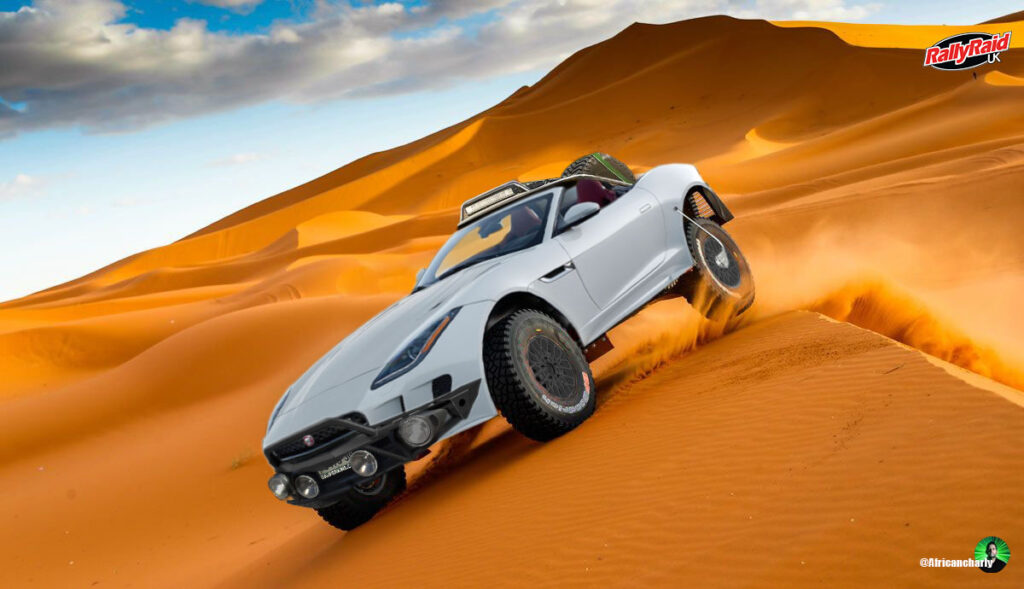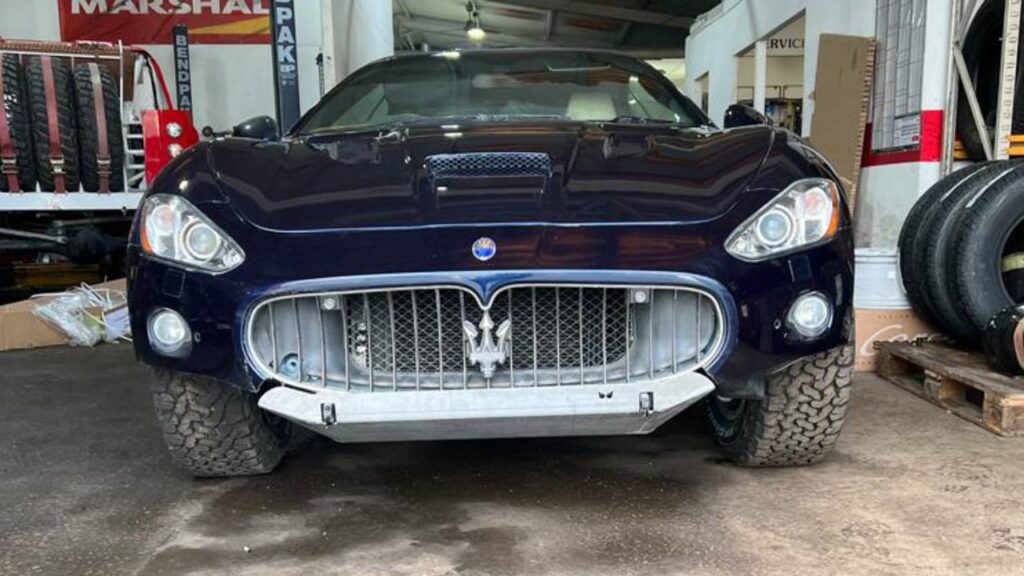rruk special projects
The Grand tour
SAND JOB
GRAND TOUR DAKAR TRANSFORMATION
The former presenters of Top Gear, now involved in the series The Grand Tour, decided to experience the grueling Dakar Rally in North Africa, specifically in the desert of Mauritania. To achieve this, they enlisted RallyRaiduk to carry out the transformations. They worked on a set of luxury convertible cars: a Jaguar DB9, a Maserati GranTurismo, and a Jaguar F-Type. All cars had their electronics modified to prevent going into limp mode due to sand getting into the numerous electronic sensors. They also upgraded the tires and suspension to handle the sandy tracks and added bash plates to protect the underbody of the cars from rocks on the track.
Sand job the adventure
The reason the makers of Grand Tour chose our company to produce the three cars is our extensive experience and proven expertise in building race-proven Dakar cars for the past 20 years. Over two decades, we have consistently demonstrated our capability to design and construct vehicles that can withstand the rigorous demands of the world’s toughest rally race. Our track record in producing durable, high-performance cars for the Dakar Rally has established us as a leader in the field. This solid reputation and our commitment to excellence made us the obvious choice for the Grand Tour team when they needed top-tier vehicles for their show.

MASERATI GRAN CABRIO
In the “Sand Job” episode of The Grand Tour, James May chose a Maserati GranCabrio for their adventure in the Mauritanian desert.
The Maserati GranCabrio is a convertible grand tourer equipped with a 4.7-liter V8 engine, producing 433 horsepower and 361 lb-ft of torque. This powerful engine allows the car to accelerate from 0 to 60 mph in around 5.2 seconds, with a top speed of approximately 175 mph. The car features a ZF six-speed automatic transmission.
James May’s Maserati GranCabrio surprisingly performed better than expected, despite the brand’s reputation for fragility.
The picture on the left is a photoshop rendering of the maserati with the modifications. The production models were based of these renderings.
ASTON MARTIN DB9
The car chosen by Richard Hammond is the Aston Martin DB9 Volante is the convertible variant of the DB9 grand tourer, equipped with a 6.0-liter V12 engine, producing 510 horsepower at 6,500 rpm and 457 lb-ft of torque at 5,500 rpm. This powerful engine allows the car to accelerate from 0 to 60 mph in approximately 4.6 seconds, with a top speed of 183 mph. The car features a 6-speed automatic transmission (Touchtronic 2) and rear-wheel drive (RWD).
Hammond’s Aston Martin, was fraught with electronic problems from the start wich gave a lot of work every night to the mechanical suporting crews.
Richar specifically wanted a roof tent implemented in the design of his car.


JAGUAR F-TYPE V6 S CONVERTIBLE
Jeremy Clarkson chose the Jaguar F-Type V6 S Convertible. A sleek and sporty roadster equipped with a 3.0-liter supercharged V6 engine, producing 380 horsepower and 339 lb-ft of torque. This impressive powertrain enables the car to accelerate from 0 to 60 mph in around 4.8 seconds, with a top speed of approximately 171 mph. The car features an 8-speed QuickShift automatic transmission and rear-wheel drive (RWD).
Out of the three was the simplest and the one that gave less trouble with mechanics an electronics even though, James drove it as hard as he possibly could.
ELECTRONICS – BASH PLATES – SUSPENSION – TYRES
The main modifications followed the same pattern on all three cars. Regarding electronics, we removed as many superfluous sensors as possible that, if they stopped working due to the dust and sand, would cause the car to stop. We added bigger off-road tires with smaller rims, necessitating a swap to smaller diameter brakes to maximize tire depth, allowing the tires to act as suspension on the rocky tracks. Many electronics are housed in the wheel arches, so these had to be repositioned in the engine bay for protection and to make space for the larger tires. The suspension was reinforced with Baja-spec shock absorbers, which increased the ride height. In the final stages, we added full-body undercarriage bash plates to protect the mechanics and use them as slide plates in the sand dunes.

